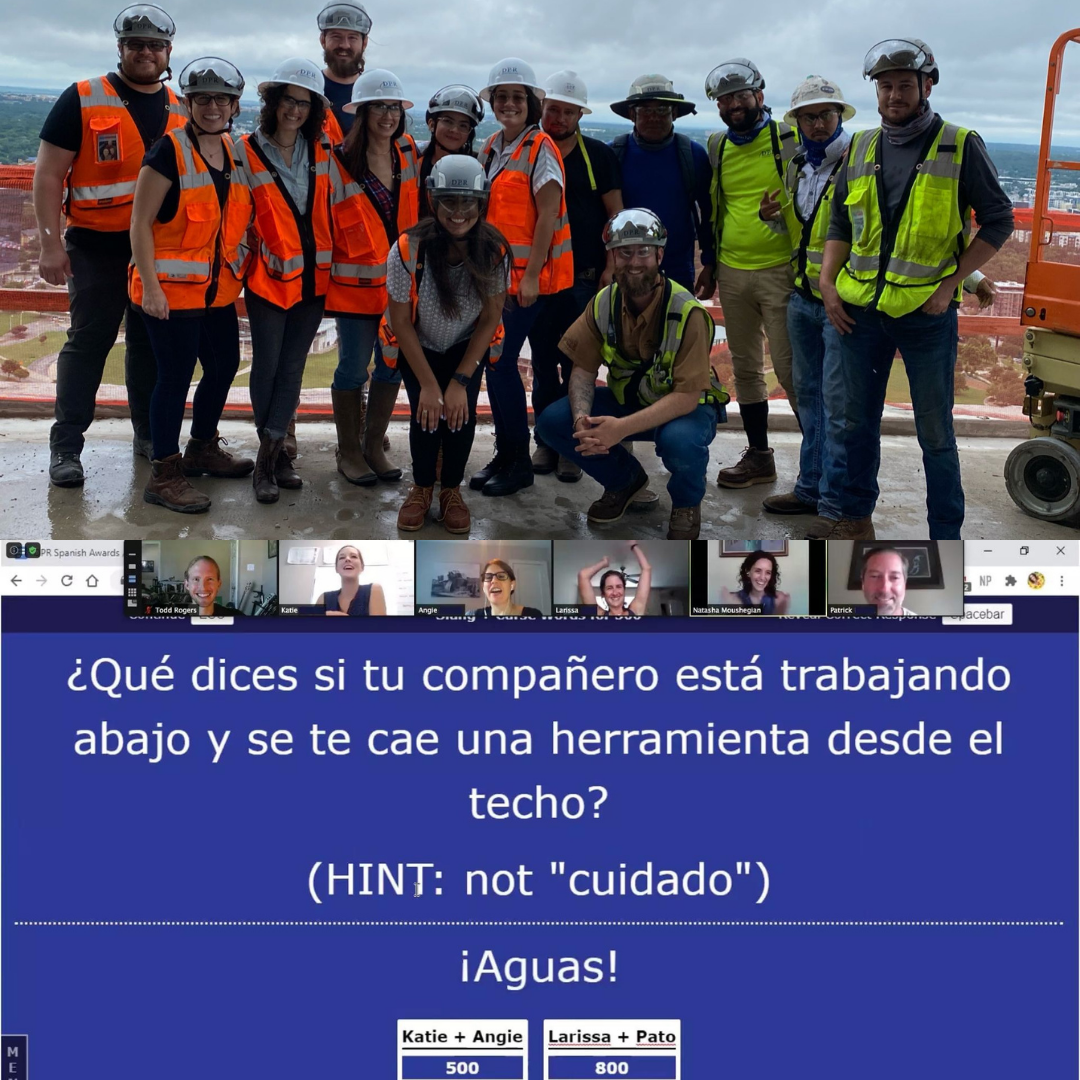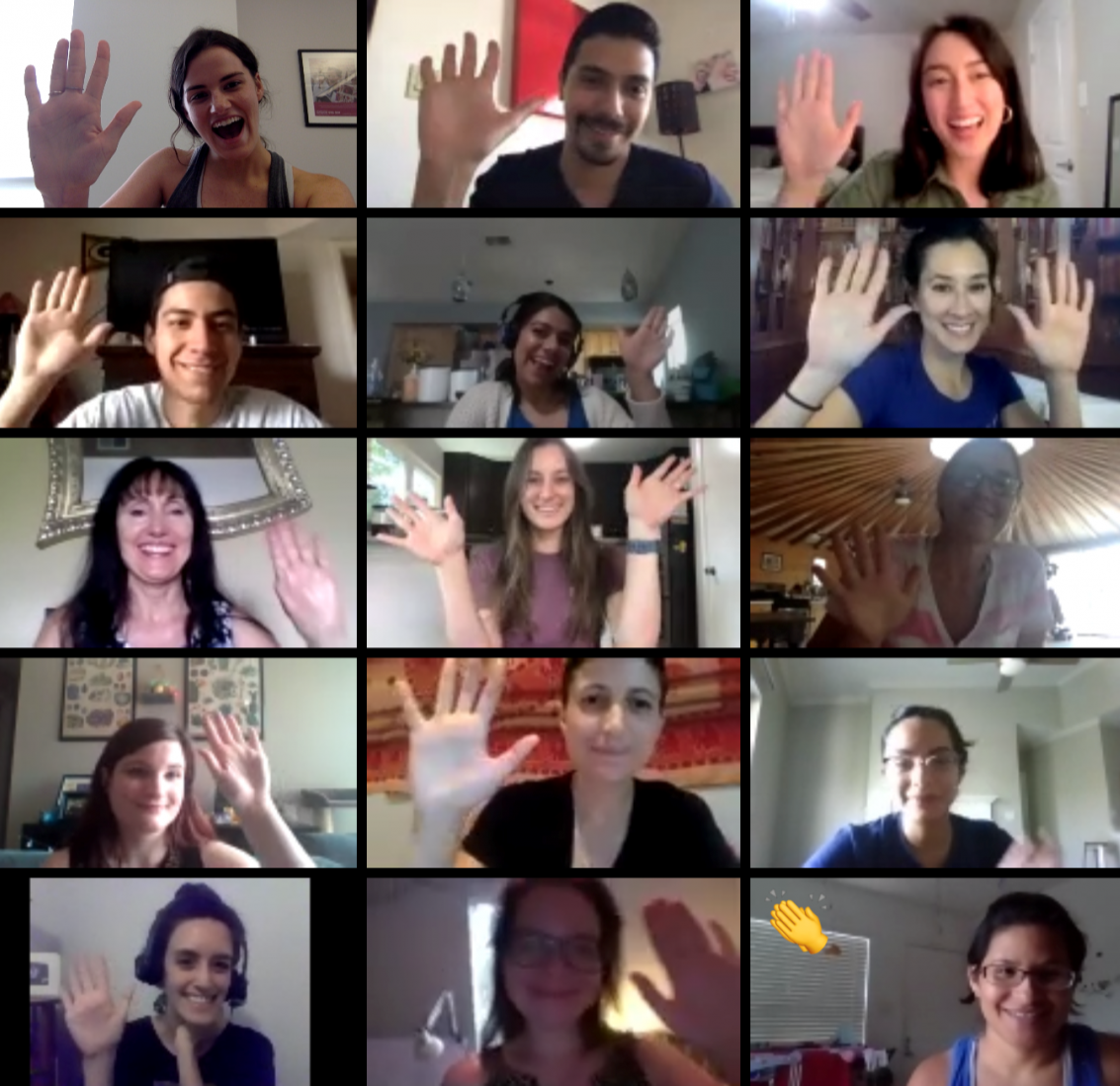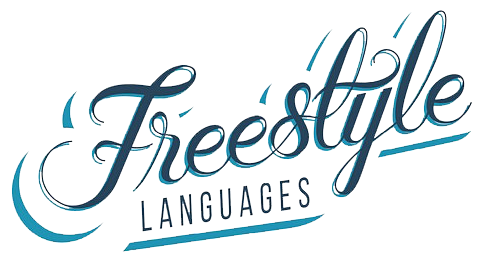Elizabeth Mack, Founder
How to Select a Language Learning Approach for Your Organization
In the modern business world, it’s been established that a successful corporate language strategy unlocks a host of benefits, but discerning where to begin may feel like a puzzle. Luckily, Freestyle Languages has the blueprint.
Interestingly, like many aspects of our post-covid world, we’re witness to a paradigm shift in the reasons and goals organizations wish to invest heavily in language; and they’re almost exclusively related to DEI initiatives. Few things are more inclusive than speaking another’s language. Without a doubt, empathy and equity can be built through language, and we’re honored to play a part in building all of these things with our ‘Language at Work’ participants / organizations.
Interestingly, like many aspects of our post-covid world, we’re witness to a paradigm shift in the reasons and goals organizations wish to invest heavily in language; and they’re almost exclusively related to DEI initiatives. Few things are more inclusive than speaking another’s language. Without a doubt, empathy and equity can be built through language, and we’re honored to play a part in building all of these things with our ‘Language at Work’ participants / organizations.

Empty space, drag to resize
For over 5 (of our 10+) years, we’ve enjoyed supporting organizations and companies across a wide variety of industries in selecting a strategy that serves their unique needs and growth. Through our experience, augmented by a data-driven approach (such as what Harvard Business School recommends), we have pieced together the most essential aspects of a successful language learning approach. When selecting a language learning program, set yourself up for success with the consideration of 4 important criteria:
#1 Identify Key Areas, Goals, and Pain Points
Each industry fosters a different environment and possesses varying challenges when it comes to multilingual and multicultural teams. Consider the most impactful recent language research by ACTFL, “Making Languages Our Business: Addressing Foreign Language Demand Among U.S. Employers”. Whether you have high risk factors, such as liability in the health industry or a safety record with room for improvement in the construction industry (identified by ACTFL as having the #1 largest language gap of all U.S. industries), many organizations, large or small, recognize that language barriers hinder progress and increase risk. Perhaps you’re in manufacturing, identified by ACTFL research as having the 2nd largest language gap in the U.S., and simply wish to build retention and team cohesion through learning Spanish.
Where in your organization is multilingual communication and connection necessary to help you do what you do best, even better?
Where in your organization is multilingual communication and connection necessary to help you do what you do best, even better?
#2 Compare Language Approaches
Your organization is a distinct entity, so it is important to select a language methodology that will work with your teams. Be sure to compare programs to see which best suits your ‘pain point’. Some firms seek professional language experts for this, but a simple Google search for online language learning could also grant some insight.
To vet a model for your organization, be sure it offers the following (disclaimer, you’ll note Freestyle’s bias for a model that actually works, tried and true):
To vet a model for your organization, be sure it offers the following (disclaimer, you’ll note Freestyle’s bias for a model that actually works, tried and true):
- Robust online model: Given constraints due to geographic locations dispersed across time zones or work-from-home limitations, the convenience of an online model is hard to beat, particularly in pursuit of proven outcomes. We prefer - and data backs up - the flipped online classroom model.
- Live virtual instruction provides the opportunity to speak face-to-face if speaking outcomes are a priority, while offering a scalable model accessible across time zones.
- Ability to assess the current language levels of each learner and to help them develop their skills accordingly.
- Professionally trained instructors This is distinct from certified instructors touted by standard academic models. Pedagogy - or the knowledge of how to teach - when it comes to language acquisition is critical. (Think of certification as a Model-T, pedagogy expertise as a Tesla.)
- Innovative curriculum and customized to your industry, with hours of available online content for self-practice and confidence-building; make sure that curriculum is hosted on an LMS (learning management system), online for on-the-go learning
- The 5th skill: culture. A solid curriculum is built through culture rather than intermittently offering cultural elements (or even worse, doesn’t infuse culture into the material at all!)
- Proven track record of effective language acquisition; ask to see a case study, and in the very least, testimonials of recent clients
- Solid relative cost value based on the above; if it’s free, question the outcomes.

You may ask along the way: ‘What is all the hype about some of the apps?’ Freestyle agrees that apps offer great supplemental practice, but we must remember that language is a uniquely human trait. Our brains are designed specifically for the development and use of language, to communicate face-to-face and to retain knowledge and understanding. In fact, even as adults, language learning is possible!
#3 making language our business

Once you’ve researched your options and narrowed down your top 3 models / programs, schedule an ‘info session’ to meet with at least a portion of the team; ideally this would include an instructor.
1. You will want to know who hires and trains the instructors, or, alternatively, find out if their approach consists of hiring instructors or ‘tutors’ who speak that language as their 1st language and sending learners a link to simply practice online. (Buyer beware, this approach is common yet not effective. Think of that like a meetup or a free language exchange.)
2. You will also want to see the LMS / online platform for yourself: see what it looks like and how the materials are developed and offered. Is it engaging? Is it FUN?
3. Lastly, a solid ‘info session’ should also include some sort of demonstration so that you can actually experience how the learning will feel. (We love to do ‘demos’!)
4. Most importantly, search for the sense that the language program will have the capacity and the will to deeply involve themselves in your company culture and language goals. This should not be limited to a simple transactional agreement, but rather a mutual understanding.
5. Do they understand your needs and have the ability to provide the customized curriculum and instruction that your team specifically requires, across multiple time zones? Make sure the answer is a resounding “yes!” For example, we know (and love) that a core value at DPR Construction is safety, and we mutually work together to ‘build and flex the empathy’ muscle. Building and promoting empathy is DPR’s #1 goal in their language learning investment.
1. You will want to know who hires and trains the instructors, or, alternatively, find out if their approach consists of hiring instructors or ‘tutors’ who speak that language as their 1st language and sending learners a link to simply practice online. (Buyer beware, this approach is common yet not effective. Think of that like a meetup or a free language exchange.)
2. You will also want to see the LMS / online platform for yourself: see what it looks like and how the materials are developed and offered. Is it engaging? Is it FUN?
3. Lastly, a solid ‘info session’ should also include some sort of demonstration so that you can actually experience how the learning will feel. (We love to do ‘demos’!)
4. Most importantly, search for the sense that the language program will have the capacity and the will to deeply involve themselves in your company culture and language goals. This should not be limited to a simple transactional agreement, but rather a mutual understanding.
5. Do they understand your needs and have the ability to provide the customized curriculum and instruction that your team specifically requires, across multiple time zones? Make sure the answer is a resounding “yes!” For example, we know (and love) that a core value at DPR Construction is safety, and we mutually work together to ‘build and flex the empathy’ muscle. Building and promoting empathy is DPR’s #1 goal in their language learning investment.
#4 Start Slowly
In most cases, a small pilot, i.e. a “trial” cohort of two or three classes will set this initiative up for success further down the road. Rather than jumping in all at once and overwhelming all parties, starting slowly enables those involved to learn as the program grows. Some adjustments may include the ideal number of weeks in a session, whether you want to ask for level certifications, etc. Invest the time in setting up the best program fit for your learners and you will see that you are really setting them up for greater learning success through a more meaningful experience. (Beware of an annual contract requested upfront.)
What better way to bring diversity to your company than through embracing the power of language learning across multilingual and multicultural teams? You will encourage fresh perspectives and stronger relationships in your teams by providing a learning experience that lasts a lifetime. Language learning is the key to breaking down communication barriers and building a truly global, collaborative organization.
Once organizations tire of the fatigue from weathering the downside of no language strategy (such as lack of understanding, high turnover, retention problems, team cohesion, and ultimately the bottom line), they can prepare to seize on and soar from the varied strong returns on investment with the selection of a program designed specifically for them.
Contact Freestyle Languages for a simple discovery call to learn more!
Freestyle Languages
Language learning your way.
